
|
|
|
|
Mark Meinke and The Rainbow History Project |
|
The pioneer, Mark Meinke, has devoted his considerable energies to the preservation of GLBT history in the nation's capital. In only a few years the accomplishments of his organization, The Rainbow History Project, have effectively provided men and women in other American cities, those who see the need for collecting and preserving the stories of their own communities, with an inspiring model.
Local community response was rather low key initially as we group defined our mission and set about creating priorities. One of the highest priorities quickly became the need to collect and preserve oral histories of our life in the nation's capital. We felt that so many stories of life here had already been lost to AIDS and other illnesses that it was important to begin taping community members' memories immediately. Our original group of five began listing community members whose stories we needed to get on tape as quickly as possible. With the oral history project underway, we moved on to developing both a timeline of community history and amassing a database of our social geography, the places and spaces that have been important to our history. The Places and Spaces data now lists over 400 bars, clubs, restaurants, community institutions, and other places that since 1920 have been a part of our social life. From the outset, the community has responded when we needed it. The Washington Blade, our community newspaper of record, readily reported our events and calls for help. When we have needed funds for special projects our appeals for help have always yielded an overwhelming response. Within a year and a half of beginning our work, we had already been recognized for Distinguished Community Service by the Gay and Lesbian Activists Alliance here. Rainbow History has sought to build strong relationships with local historical organizations and has received outstanding support from the Washington Historical Society and the Washingtoniana Division of the public libraries. One of the historical society's first 'gifts' was a free workshop on building and organizing collections. Washingtoniana helped with mapping the 400 sites on our Places and Spaces database. Metropolitan Community Church - D.C. provided the first storage space for our archives. Raj Ayyar: What are some of the Project's primary purposes?
Washington, DC is a largely African-American metropolis and we work very hard to tell the story of African-American gays and lesbians, as well as other local ethnic groups. One of our earliest supporters was the D.C. Coalition of Black Lesbians, Gays, and Bisexuals. Lacking professional quality space and equipment for preserving collections, we focused on achievable, and cheap, research projects and the oral history collection rather than amassing archival collections. We are now working on building collections of documents, artifacts, and ephemera for the use of researchers and for public display. We also looked for means to promote what we documented both within the LGBT community and within the wider local community. Our first public event was a panel discussion in April 1971 documenting the founding and early work of the Gay Activists Alliance, an advocacy group that grew out of Dr. Franklin E. Kameny's 1971 campaign for Congress, the first such campaign by an openly gay man. Since then, we have held more than 25 panel discussions of aspects of our history, as well as Talking History chats with major figures in the community. One of our earliest discussions was a Spanish language discussion of early Latino/Latina organizations. Raj Ayyar: I've noticed that the Project is now networking with other archival groups preserving Washington, D.C. history. Could you tell me a little about interactions between these organizations and the Project? Mark Meinke: Rainbow History's support from the Historical Society of Washington DC and the Washingtoniana Division of the public library has brought important pro bono professional advice to our group. Over time these links have led to Rainbow History's membership of the planning committee for the annual Washington, D.C. Historical Studies Conference. Beyond the local area, we have forged strong links with gay and lesbian professionals in history and archiving. We have strong support from, and for, the Committee on Lesbian and Gay History (CLGH) of the American Historical Association and the Lesbian and Gay Archivists Roundtable (LAGAR) of the Society of American Archivists. LAGAR has been incredibly supportive as we begin indexing thirty-five years of the Washington Blade. For members of CLGH, we serve as a referral point for researchers looking for primary sources and contacts for their research. In 2002, we helped Bruce Reeves of the Houston GLBT historical society start the Interarchives group on Yahoo to serve as a talking point for gay and lesbian archives around the country. We have received strong support from the (formerly) Gay and Lesbian Historical Society of Northern California and from the Stonewall Archives and Library. Raj Ayyar: Now that you've had time and experience researching and collecting materials from across many past decades-which periods strike you as particularly outstanding for one reason or another? Mark Meinke: Personally, because I lived outside the U.S. until 1989, I find everything fascinating. But I would love to spend more time collecting materials and researching the 'transition' periods:
Raj Ayyar: What kind of importance would you assign to David K. Johnson's recently published history: The Lavender Scare: The Cold War Persecution of Gays and Lesbians by the Federal Government? Mark Meinke: David Johnson's Lavender Scare is an incredible achievement. Johnson's work documents the particular terrors of being gay and lesbian in the federal city in the 1940s, 1950s, and 1960s and gives a voice to both those terrified and those resistant to repression. Much recent documentation of gay and lesbian history has omitted Washington, DC's contributions to the building of gay and lesbian community and civil rights. Johnson's Lavender Scare begins to redress the imbalance. Raj Ayyar: If you were to point to some particulars about Washington, D.C.'s LGBT community that make it somewhat different from other major cities in the U.S., what might those differences be? Mark Meinke: Foremost is the fact that Washington, DC is an African-American city. Telling the story of African-American gay, lesbian, bisexual, and transgendered life is one of our primary goals. Unfortunately, media coverage of this and other ethnic communities has been far from comprehensive, so the task is much harder. Life under, and after, segregation is not well documented, but it needs to be. Much the same can also be said of our Latino/a gay, lesbian, bisexual, and transgendered brothers and sisters. Rainbow History is working very hard to document the life of all aspects of these, and other, communities. Each ethnic and racial community has developed institutions of its own on its own.
People have asked me why Washington never had a 'Stonewall'. We came close in 1970 when GLFers in gender-fuck dress were refused service at a local restaurant and fought back, but that is one of the few instances of our having to fight back. Though the local police department vigorously harassed and entrapped gays and lesbians through the 1950s, 1960s and 1970s, Washington rarely experienced the sort of police raids on clubs that other urban centers endured. There are in fact only two such police raids that I can recall. In large part, I believe, this is a tribute to the work of Dr. Franklin E. Kameny, the Mattachine Society, and later the Gay Activists Alliance in asserting our civil rights and letting the police department know that we not only knew and would assert our rights, but would hold the police to their statutory limitations. Raj Ayyar: How has Washington changed for the better since, say, 1970? Mark Meinke: Most importantly, we have asserted our right to civil rights. Like most urban centers of GLBT life, we have created a community out of nothing. There are now community organizations to deal with nearly every aspect of our lives here. Through the politically astute work of our local lobbying groups (the Gay and Lesbian Activists Alliance, Gertrude Stein Democratic Club, the D.C. Coalition of Black Lesbians, Gays, and Bisexuals, and the Log Cabin Republicans), our community has become a partner in the local political process that cannot be ignored. Raj Ayyar: Are there particular drawbacks to living in the nation's capital? What kind of complaints do you hear from people who've moved from elsewhere? Mark Meinke: An unfortunate fact of life here and a consistent complaint of those who actually live in the District of Columbia is our lack of clear legislative autonomy (not to mention voting rights!). Under what can only be characterized as colonial domination by Congress, many of the initiatives and legislative actions of the District of Columbia have been rolled back or otherwise thwarted. This is particularly true of laws and initiatives intended to better the lot of the GLBT community here! Another recurring and inevitable tension in our life here derives from our position as both a local community and a national lobbying center. Since the days of Gays On The Hill and the Gay Rights National Lobby, we have played host to many national gay groups that see themselves as in the community, but not necessarily of the community. Yet when national events take place here our local community has always risen to the occasion to the play the role of host to the event. The national limelight has often obscured our local achievements and certainly has led the national GLBT media to overlook our achievements here in Washington, D.C. Washingtonians also often feel that the exchange of our support for national organizations and national events held here is not recompensed with support for our voting rights and legislative autonomy. Too often, we feel the national organizations expect our sweat equity for their projects without repaying the compliment.
Recently we have launched a campaign to save the rapidly deteriorating home of the Furies on Capitol Hill. An intentional policy of demolition by neglect on the part of the building's owner has seriously compromised the physical structure of the building. The Furies collective was a precedent building experiment in early lesbian feminist separatism that had major ramifications within local and national feminist and lesbian discussions in the early 1970s. Raj Ayyar: Your Project has also been publishing some walking-tour brochures for visitors. These brochures draw attention to particular locales where any number of happenings have occurred. Which areas have you currently highlighted and what are some of the points the Project's brochures make? Mark Meinke: Our tour brochures assert our continuing presence throughout the metropolitan area. They document for residents and visitors the places where we have played, prayed, lived, politicked, partied, and built our community institutions. As each brochure is completed it will become part of our website. We will distribute print copies of the brochures through the City Museum, the Washington Convention Center, other tourist sites, and community businesses. The first brochure, Dupont Circle, is now available. Within the next three months, we will also distribute brochures for the South Capitol Street entertainment area, Capitol Hill, African-American sites, and women's sites. Future brochures provide tours of the Georgetown area, the old clubs around Lafayette Square, the 14th St/Franklin Square/bus station area, sites in drag history, and important suburban sites. Raj Ayyar: You've preserved some significant materials about Washington's transgender community. Can you tell us a little about how that community first organized? Mark Meinke: The transgendered community is one of the most neglected locally and historically, but one with roots going well back into the 1960s. One of the earliest 'safe' gathering places was known as the Black Nugget, which unfortunately was lost to the fires following Dr. Martin Luther King's assassination. The earliest efforts to organize the transgendered community, of which we are aware, date to the early 1990s. In 1994, Jessica Xavier, Dee Curry, and Jean Robinson Bay organized Transgendered Against Discrimination & Defamation. Earline Budd, who brought one of the first successful transgender discrimination cases before the Human Rights Commission, organized later groups. However, the transgendered have always contributed to the community as individuals. Raj Ayyar: What factors have characterized the Project's web site while its been growing to its present state? What's now included in it? How do you envision its use for researchers and historians as well as for people who are simply interested in LGBT history?
Raj Ayyar: Are there future projects you've been considering but that haven't yet materialized? Mark Meinke: We have just begun two long-term projects that we consider an important part of our legacy to the Washington, DC and to the national GLBT community. The first is to construct a definitive index for the Washington Blade, our community's newspaper of record since October 1969. The newspaper is the most complete existing chronicle of the development of our local community and of national GLBT events occurring here. We expect this project to last three to five years before it is in its final form. This will probably be our most outstanding contribution to original historical research. Bruce Pennington, one of our founding members and first vice-chair, preserved over 250 broadcast tapes of the Friends radio show. Friends Radio was a unique local radio show that broadcast interviews, local and national GLBT news, gay and lesbian music, and commentary from 1973 to 1982. A bequest from Pennington's estate is funding our initial work of preserving and copying these tapes. Among the treasures of the collection are interviews with Divine and Jon Waters, Christopher Isherwood, Troy Perry, Jack Nichols and Lige Clarke, Frank Kameny, Betty Fairchild, Frank Kameny, Barbara Gittings, and many many local community leaders. Raj Ayyar: If some gay Washingtonian wants the Project to preserve materials that add somehow to an understanding of the city's past, what steps should he or she take? Mark Meinke: The first step is to itemize what you have, and then to protect it. Documents, particularly periodicals, are particularly perishable and need to be housed in protective environments. Rainbow History can help with both aspects by creating finding aids for the collection and advising the owners on how to protect what they have. Next, we hope that owners will let us know what they have. We don't have the capacity at this point to accept many collections or materials but we do want to advise researchers where they can find important research materials. If someone wants to donate a collection that we feel is beyond our means to preserve effectively, we will help them find a home for it among the city's other archives and museums. Raj Ayyar: Thank you for so effectively preserving the amazing story of our community's history in the nation's capital and also for taking time from your busy schedule to talk to GayToday. Are there any particular things about The Rainbow History Project we've missed discussing and that you'd like to tell GayToday readers? Mark Meinke: I think all that remains to be said, or underlined, is that The Rainbow History Project is only the vehicle for telling the story of gay DC. The struggles, achievements, and glories of being gay, lesbian, bisexual, or transgendered in Washington, DC belong to those who lived here. Our achievements are only as good as what members of our community will share and preserve. |
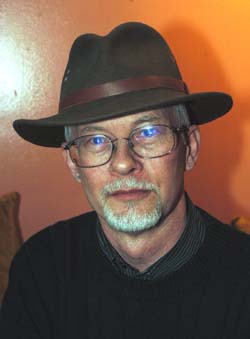 Mark Meinke is preserving gay history through the Rainbow History Project
Mark Meinke is preserving gay history through the Rainbow History Project 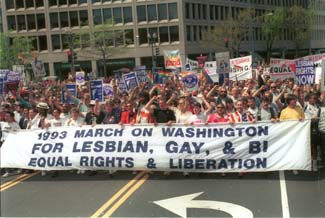 The 1993 March on Washington
The 1993 March on Washington
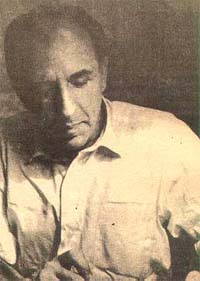 Frank Kameny, the father of activist militancy, has led the struggle for gay civil rights through the decades
Frank Kameny, the father of activist militancy, has led the struggle for gay civil rights through the decades  The 1993 March on Washington was a defining moment in gay history and the history of Washington, D.C.
The 1993 March on Washington was a defining moment in gay history and the history of Washington, D.C.
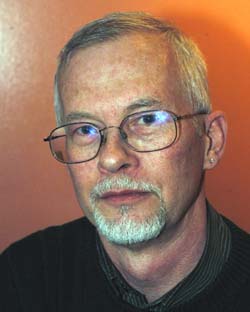 Mark Meinke
Mark Meinke 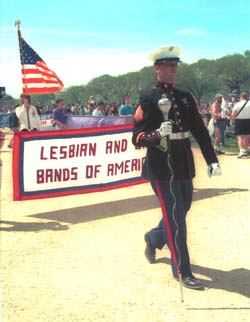 Members of Lesbian and Gay Bands of America march through Washington, D.C.
Members of Lesbian and Gay Bands of America march through Washington, D.C.